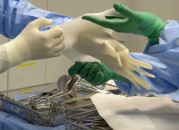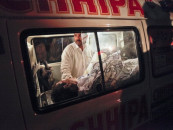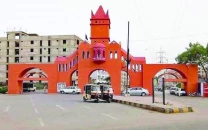Shah Noorani blast: Kekra Trucks to the rescue
First Edhi ambulance took two hours to reach the site

Due to the rough dry terrain of the uneven and rocky hills, it took more than two hours for the first Edhi ambulance to reach the blast site. PHOTO: ATHAR KHAN/EXPRESS
The shrine of Sakhi Shah Bilawal, famously known as Shah Noorani, is situated at a distance of 124 kilometres from Karachi in the remote hilly area of the Khuzdar district of Balochistan. A suicide bomber blew himself up in the centre of the shrine, killing more than 50 people and wounding more than 100 others.
Khuzdar shrine bombing: At saint’s abode, survivors relive the nightmare
That evening, it was the Kekra Trucks that provided the first means of transport for the dead and the injured from the shrine to a small town in the surroundings of the tomb of Mohabbat Faqir, which is situated at a distance of approximately five kilometres from the shrine. Due to the rough dry terrain of the uneven and rocky mountains, it took more than two hours for the first Edhi ambulance to reach the blast site.
The caretaker of the shrine, Khalifa Dost Muhammad, told The Express Tribune that right after the blast struck the shrine, the shop owners and villagers voluntarily rushed to the site and began the rescue work on their own. Initially, they shifted the injured to a private clinic near the tomb of Mohabbat Faqir.
Describing how tough it was, Muhammad said that that it was difficult for the locals to carry the bodies that were in pieces after the blast as the residents of the area were not used to handling such traumatic situations. “Therefore, we waited for the rescue to arrive from Karachi, whom we had informed through a PTCL wireless phone,” he shared.
He recalled the horrors of the blast and talked about how the suicide bomber blew himself up at 5:50pm during the 20-minute dhamal, which was being performed on the beats of a 200-year-old drum at the shrine. “The dhamal was about to end when a deafening sound left every individual’s ears ringing while most of them were lying on the ground with multiple injuries,” he shared. “Soon we realised that a bomb blast took place in the hall in front of the courtyard, where women and children usually gather to watch the dhamal.”The bomber chose the time when all the devotees gather at the specific part of the shrine for dhamal, he added.
Families ripped apart in Khuzdar shrine attack
Reasons for delay
Talking to The Express Tribune, Edhi Foundation’s Faisal Edhi explained that their ambulances reached the shrine two hours after the blast as the site was far away from Karachi, the roads were dilapidated and there were issues related to lack of communication. Edhi shared that they used to have high-frequency wireless sets that were essential for communication during disasters, which were later replaced by modern mobile phones. Edhi was of the view that this particular incident made them realise the importance of those high-frequency wireless sets, adding that he had requested the Rangers director-general to provide them with the training to use them again.
Edhi was of the view that rescue operations in such remote areas require large ambulances instead of the small Suzuki Hi-Roof ambulances.
Edhi shared that their large ambulance vans, which are around 120 to 130 in number, have travelled for more than 1.5 million kilometres and are of no use anymore. He added that they require approval from the federal government to sell them as they imported these vehicles between 1998 and 2001 without paying custom duty, which is why they are not allowed to sell them.
“But since these vehicles are of no use now, the government should allow us to sell them so that the Edhi Foundation is able to buy new large ambulances, which are the backbone of rescue operations,” he said. He added that his father, Abdul Sattar Edhi, had also asked the government to allow them to sell the vans and buy new ones but all in vain.
Published in The Express Tribune, November 14th, 2016.



















COMMENTS
Comments are moderated and generally will be posted if they are on-topic and not abusive.
For more information, please see our Comments FAQ